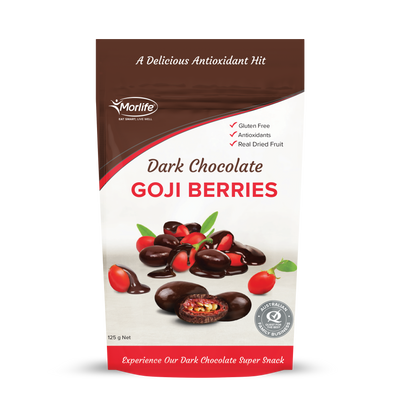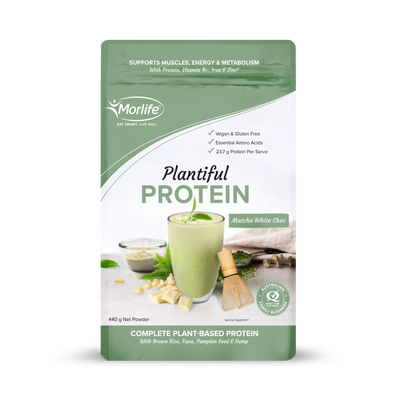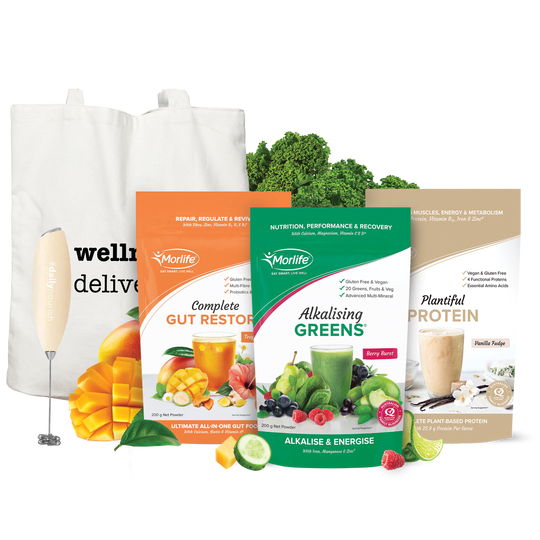The Ultimate Guide to Wheat Grass vs Barley Grass
By Leisa Armstrong
BHSc (Naturopathy)
 Similarities between Barley Grass and Wheat Grass
Similarities between Barley Grass and Wheat Grass
Source
Barley Grass and Wheat Grass are both young grasses that are harvested from the barley and wheat plants, respectively. They are both packed with nutrients and antioxidants.
Chlorophyll
Both Wheat Grass and Barley Grass provide a source of chlorophyll, the green, magnesium-rich pigment found in plants.
Chlorophyll helps plants absorb sunlight and convert it into energy, although it has also been found to have several health benefits.
Chlorophyll has antioxidant properties, which means it can help neutralise harmful free radicals in the body. Free radicals can cause oxidative stress and damage cells, potentially leading to various health issues. Antioxidants help protect cells from this damage.
Some research has found that chlorophyll has anti-inflammatory effects. It is thought that chlorophyll may work to reduce inflammation by inhibiting the production of inflammatory cytokines. Cytokines are small proteins that play a role in the immune system. Some cytokines, such as tumour necrosis factor-alpha (TNF-α) and interleukin-6 (IL-6), are pro-inflammatory, meaning that they promote inflammation. Chlorophyll may help to reduce inflammation by blocking the production of these pro-inflammatory cytokines.
Nutrient Dense
Barley Grass and Wheat Grass naturally contain small amounts of a wide range of micronutrients, including vitamins A, C, E, K and folate, and minerals such as calcium, iron, magnesium and potassium. These superfoods also include the antioxidant superoxide dismutase and vital amino acids.
Alkalising Powerhouses
Keeping your body's acid-alkaline balance in check is important for overall health and well-being. One of the best ways to do that is to eat a diet rich in alkalising foods as it gives your body the tools it needs to combat everyday acid production.
Using the Potential Renal Acid Load (PRAL) scale, we can measure how alkalising a food is. The more negative the number, the more alkalising the food.
Two of the best alkalising foods to eat are Barley Grass and Wheat Grass. Barley Grass scores a -38 on the PRAL scale, while Wheat Grass scores a -63. This is in comparison to kale and broccoli, which only score a -8 and -3 respectively.
If you're looking for an even greater alkalising boost to your diet, check out Morlife Alkalising Greens®. This is our most potent alkalising formula, scoring between -127 and -137 on the PRAL scale!
Alkalising foods are an easy way to boost your energy and support your skin, bones, and overall health. Here are just a few of the benefits of providing your body with alkalising foods:
- Increased energy levels: Alkalising foods are packed with nutrients that help boost your energy levels and keep you feeling energised throughout the day.
- Healthier skin: Alkalising foods can help to improve the health and appearance of your skin. This is because they contain antioxidants that help to protect your skin from damage and promote cell regeneration.
- Stronger bones and muscles: Alkalising foods can help to strengthen your bones and muscles. This is because they contain minerals such as calcium, magnesium, and potassium, which are essential for bone and muscle health.
- Neutralise acids in the body: Acids can build up in the body from a variety of sources, including diet, stress, and environmental toxins. When acids build up, they can create an acidic environment, which can impair the body's ability to function properly in many ways. Alkalising foods can help to neutralise acids and restore the body to a more alkaline state.
Differences between barley grass and wheat grass
Overall, both Wheat Grass and Barley Grass are healthy and nutritious choices. The best choice for you will depend on your individual dietary needs and preferences, but let’s look closely at the two side by side.
Wheat Grass
- More protein: Wheat Grass has more protein than Barley Grass, with 28.0 g per 100 g compared to 22.1 g. This makes it a good choice for people who are looking for a high-protein supplement.
- Fewer carbohydrates: Wheat Grass also has fewer carbohydrates than Barley Grass, with 4.9 g per 100 g compared to 8.0 g. This makes it a good choice for people who are following a low-carb diet.
- More superoxide dismutase: Superoxide dismutase (SOD) is an antioxidant enzyme that helps to protect the body against damage from free radicals. Wheat Grass has more SOD than Barley Grass, with 303,000 units per 100 g compared to 146,000 units.
Barley Grass
- Less fat: Barley Grass has less fat than Wheat Grass, with 4.3 g per 100 g compared to 5.8 g. This makes it a good choice for people who are monitoring their dietary fat intake.
- More dietary fibre: Barley Grass has more dietary fibre than Wheat Grass, with 56.5 g per 100 g compared to 34.0 g. This makes it a good choice for people who are looking for a high-fiber supplement.
- Milder taste: Barley Grass is also considered to have a milder taste than Wheat Grass, which some may prefer, making it a good choice for people who don't like the strong taste of Wheat Grass.
Rest assured, both options are excellent. While Wheat Grass boasts higher protein content compared to Barley Grass, the latter still serves as a valuable green protein source. Additionally, Wheat Grass may have fewer carbohydrates than Barley Brass, but they are both suitable as low-carb options, especially considering their small serving sizes. Even though Wheat Grass has a higher concentration of SOD (antioxidant enzyme) than Barley Grass, both remain commendable sources of this beneficial antioxidant. As for fat content, Barley Grass contains less fat than Wheat Grass, but both could be classified as low-fat foods considering they have only 0.1 g per serving.
So, which should you buy, Barley Grass or Wheat Grass?
As you can see, both grasses offer substantial nutritional benefits, with many choosing to alternate between buying these two superfoods, as they’re fans of both.
Ideally, though, a mixture of grasses will provide you with the broadest nutritional intake. Don’t forget to dose up on green vegetables as well, to further boost your daily consumption of nutrients. Try our Super Greens Juice with Barley Grass and Wheat Grass for the ultimate dose of green goodness.
For a super duper combination, you can get double the benefits by combining your Barley and Wheat Grass with other superfoods like Spirulina and Chlorella, or our Alkalising Greens range. It’s a unique blend of 19+ super greens, fruits and vegetables, as well as alkalising minerals such as calcium, magnesium, potassium, and zinc, prebiotic fibres, probiotics, energising herbs, Chinese mushroom extracts, and antioxidants.
Shop Barley Grass and Wheat Grass
About the Author

Leisa is a member of our in-house research team, responsible for the research and development of our amazing products. Leisa is a qualified naturopath with a Bachelor of Health Science and has been working at Morlife for over 15 years. She is the mother of two beautiful children and loves to read in her spare time. Her favourite Morlife product is Complete Gut Restore, with Deep Sleep Remedy coming in at a close second.











